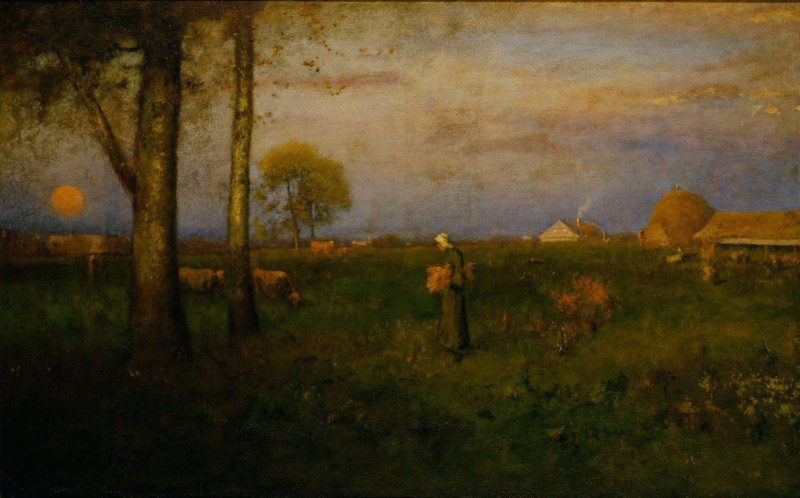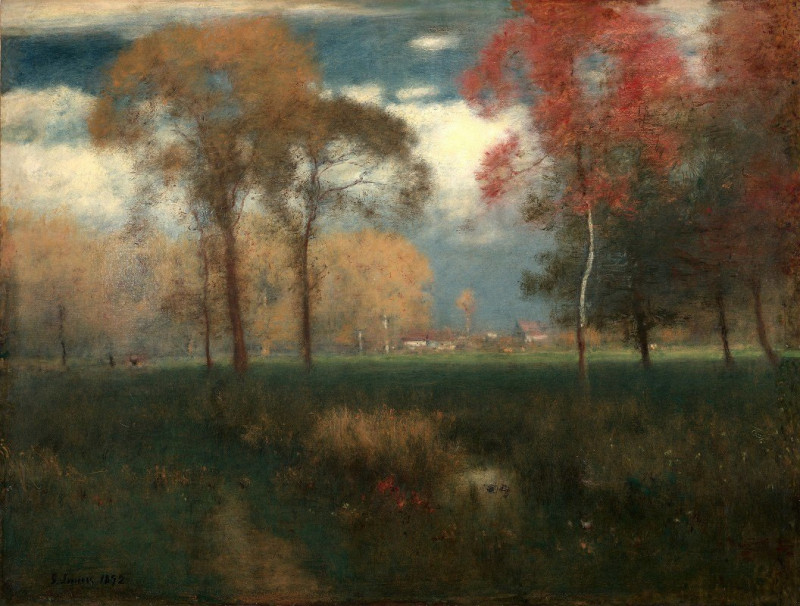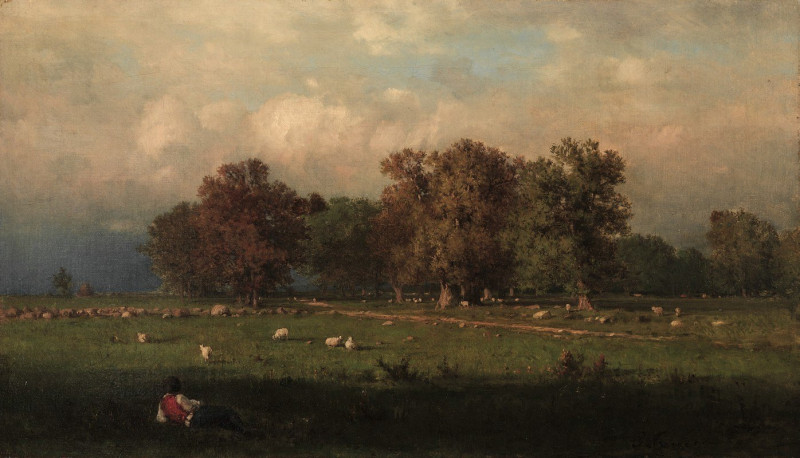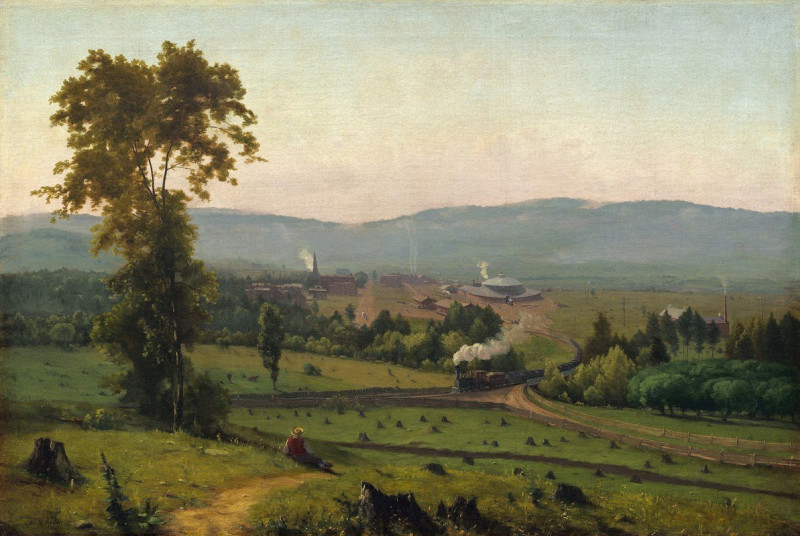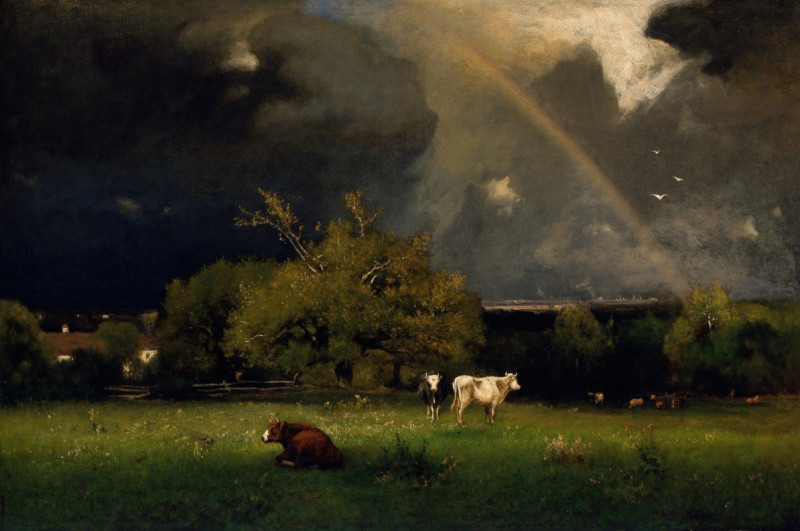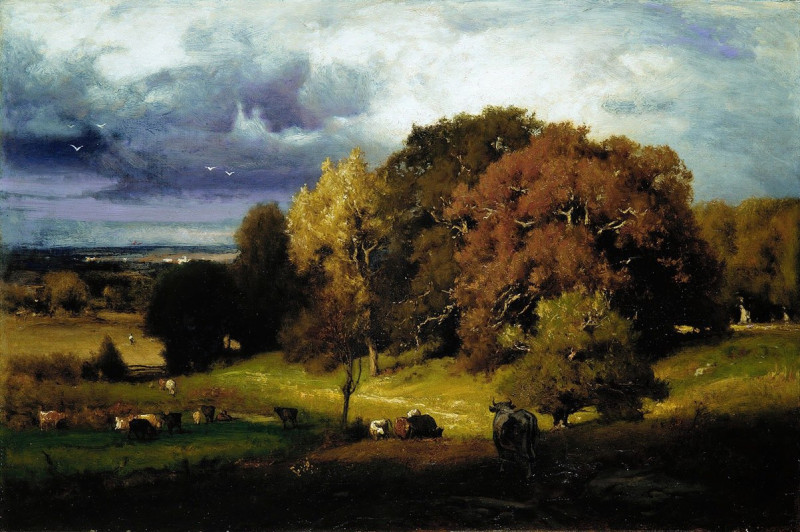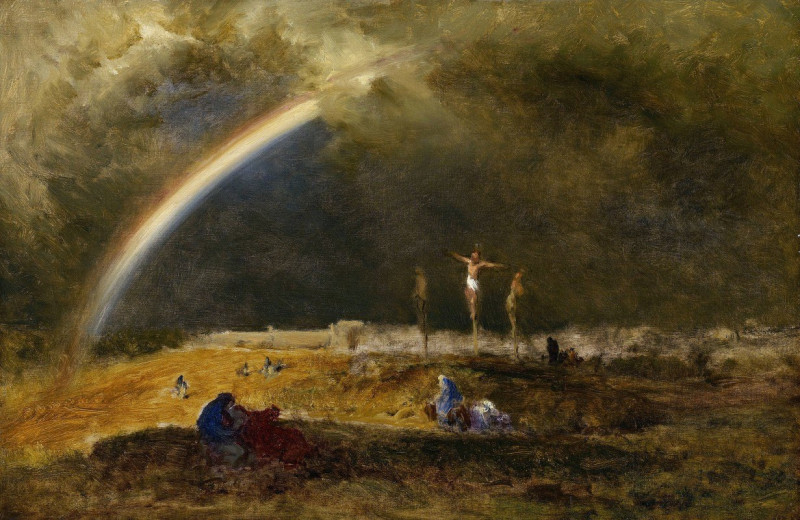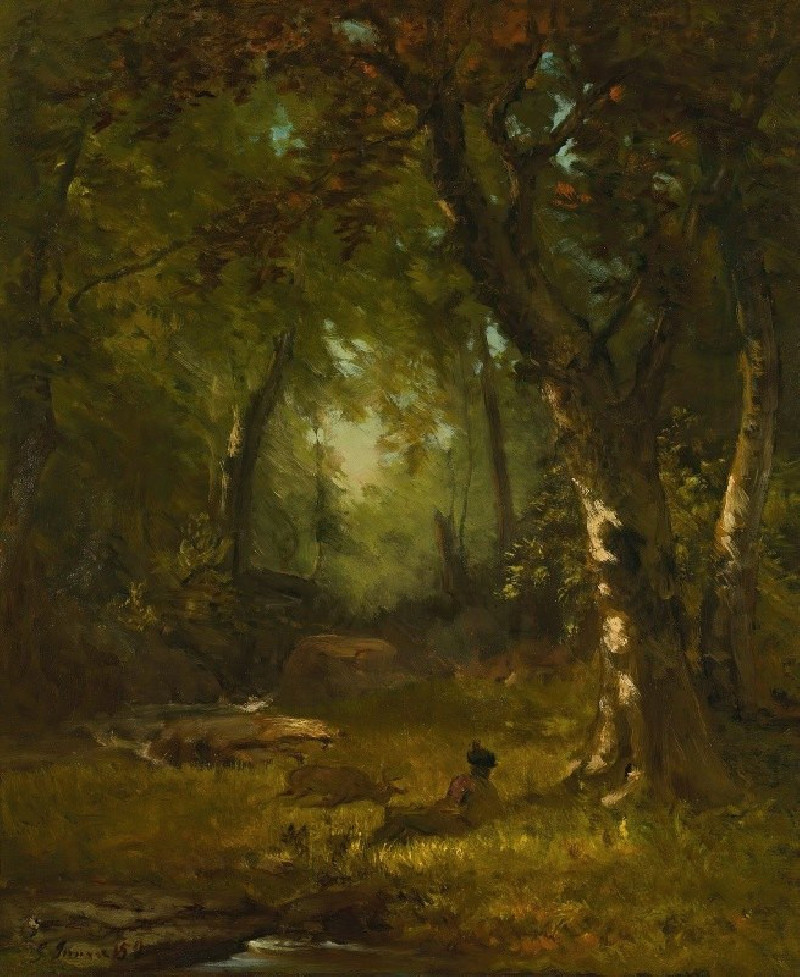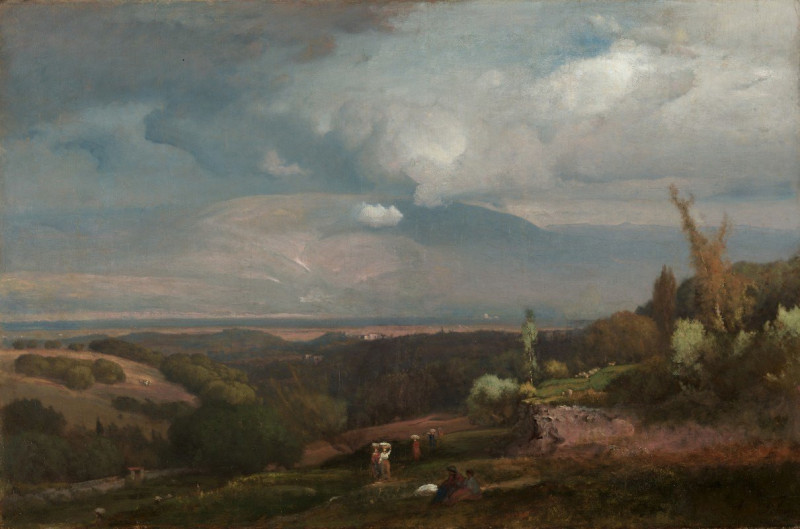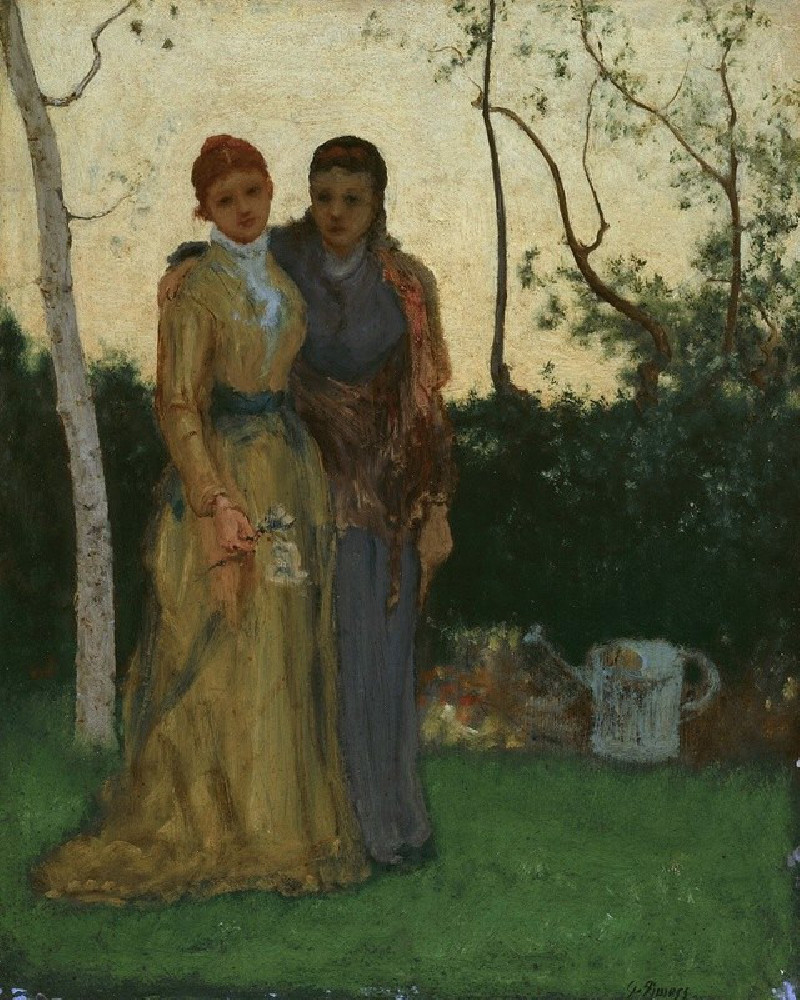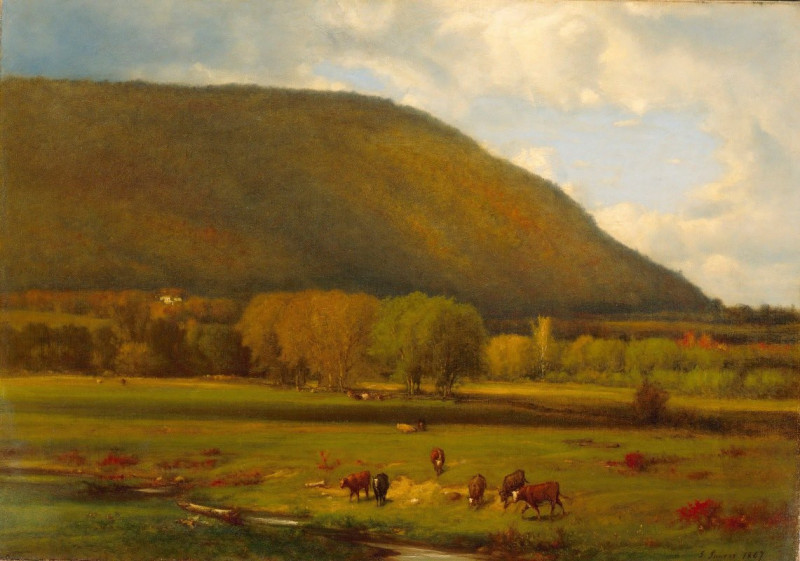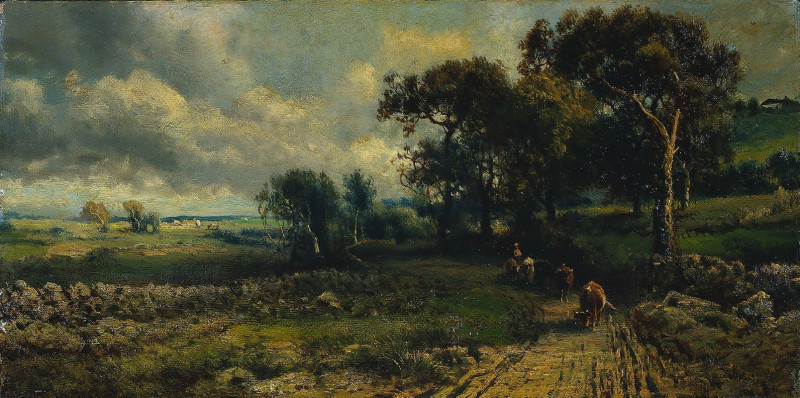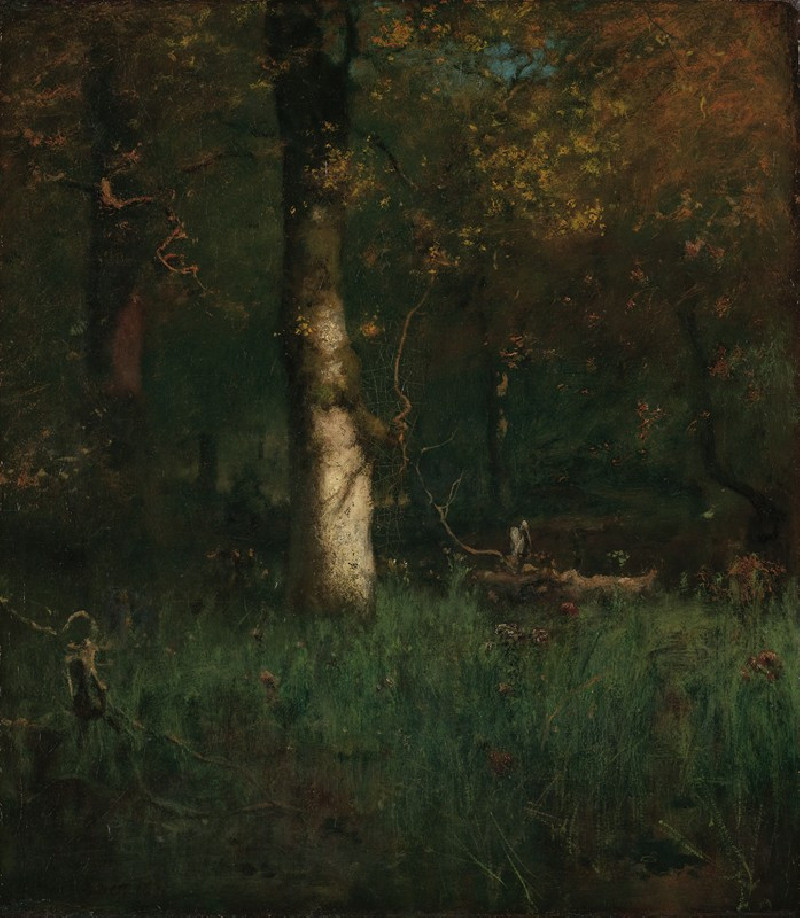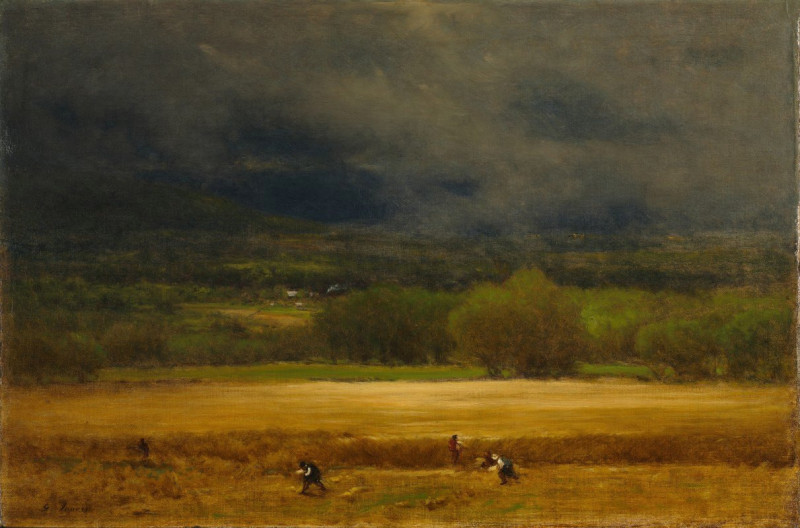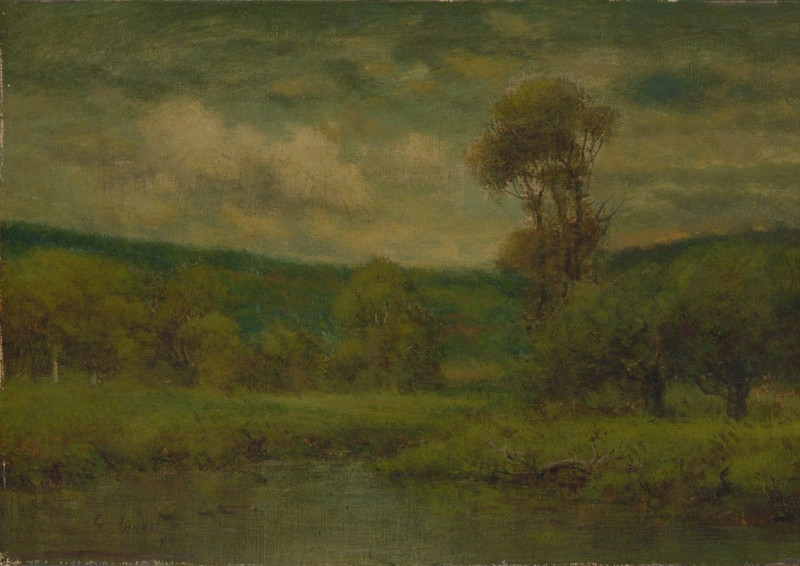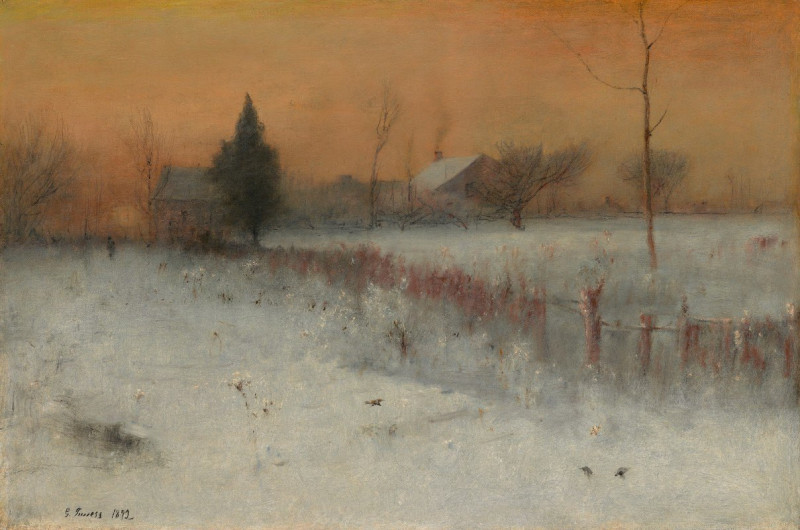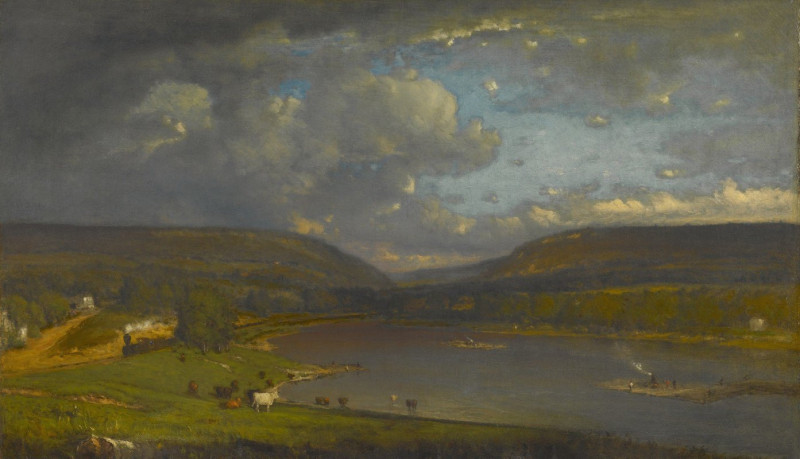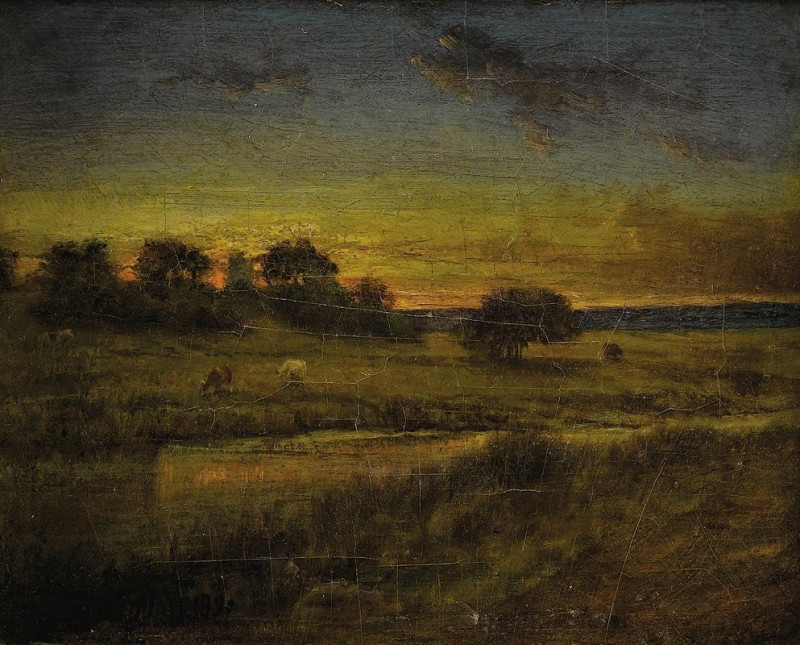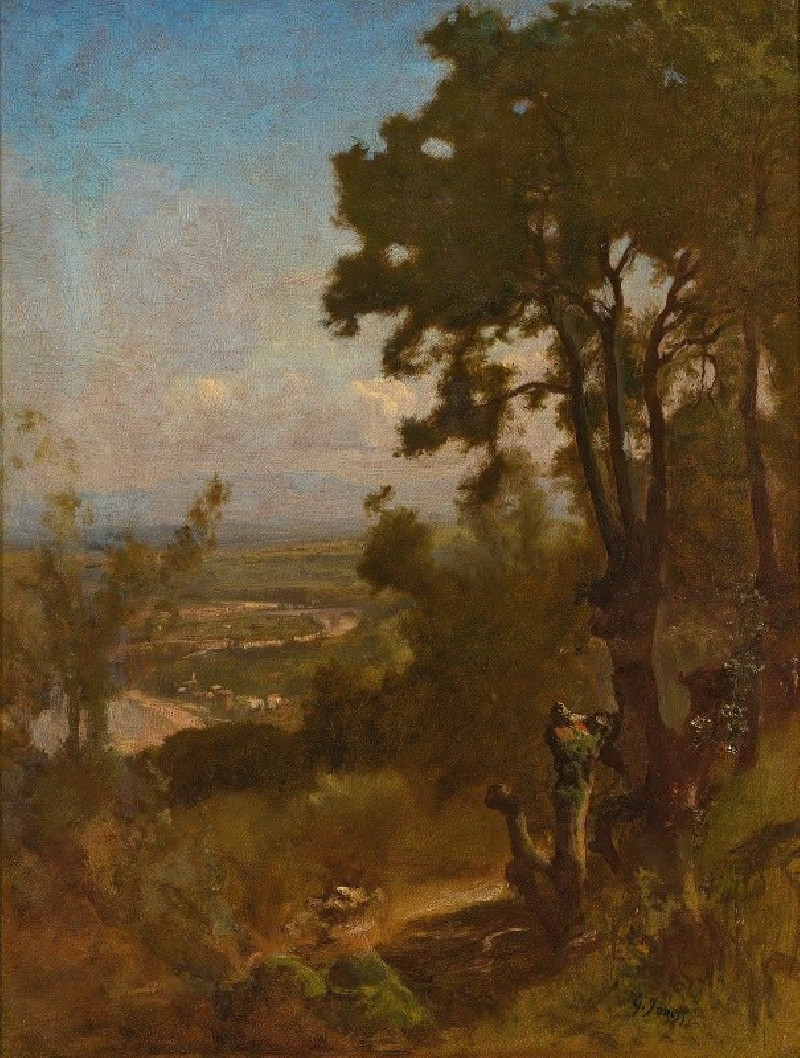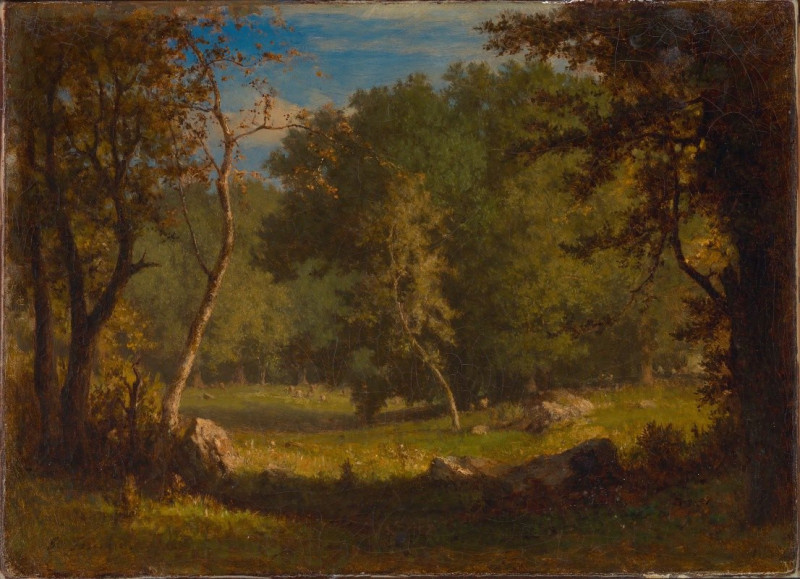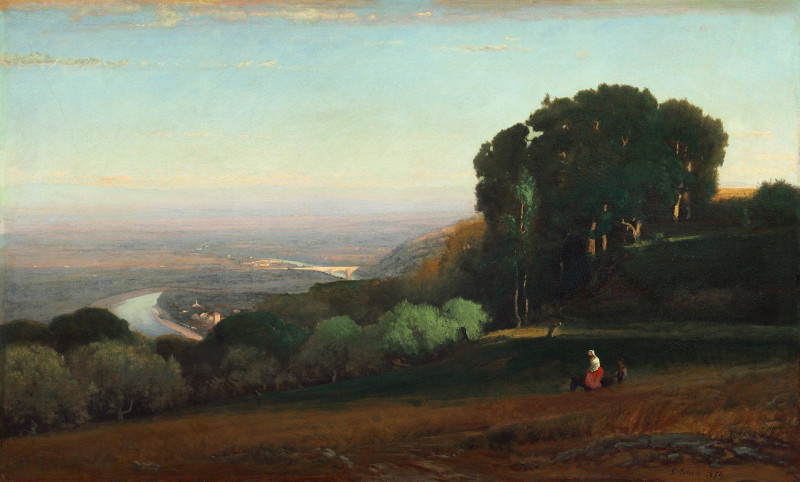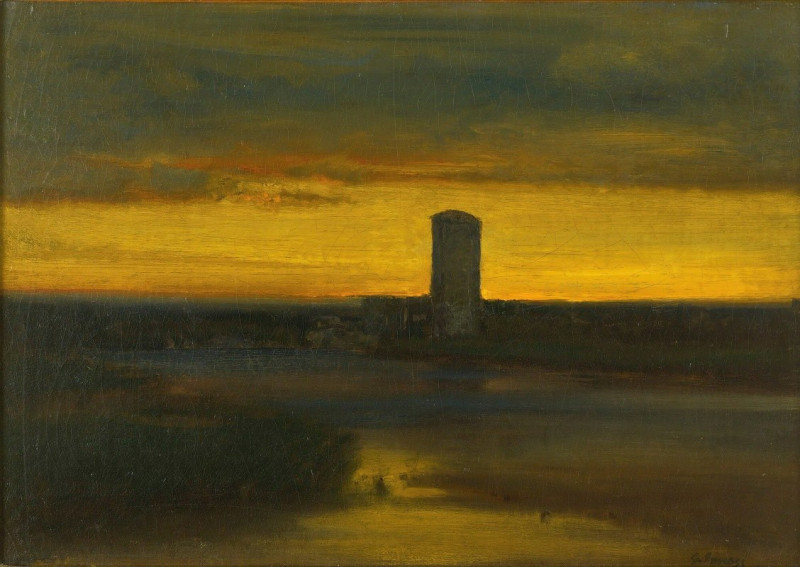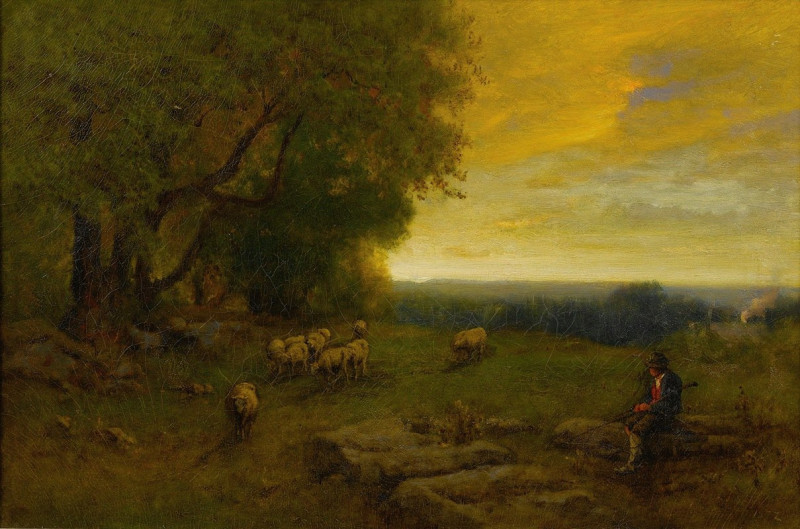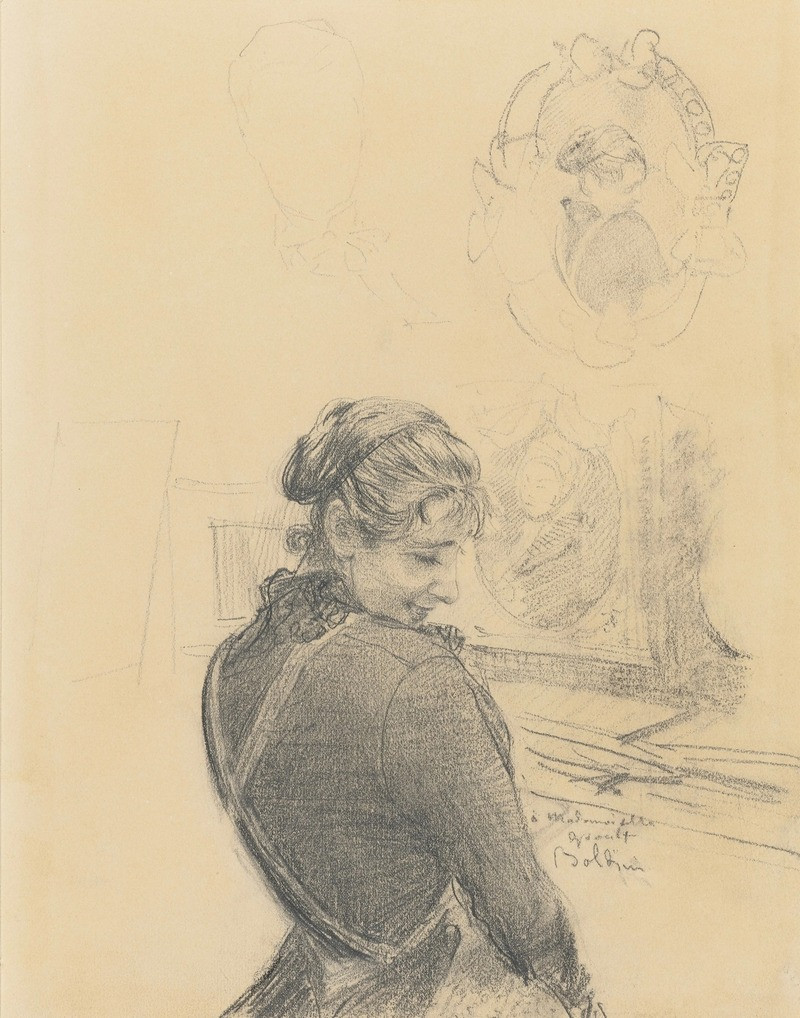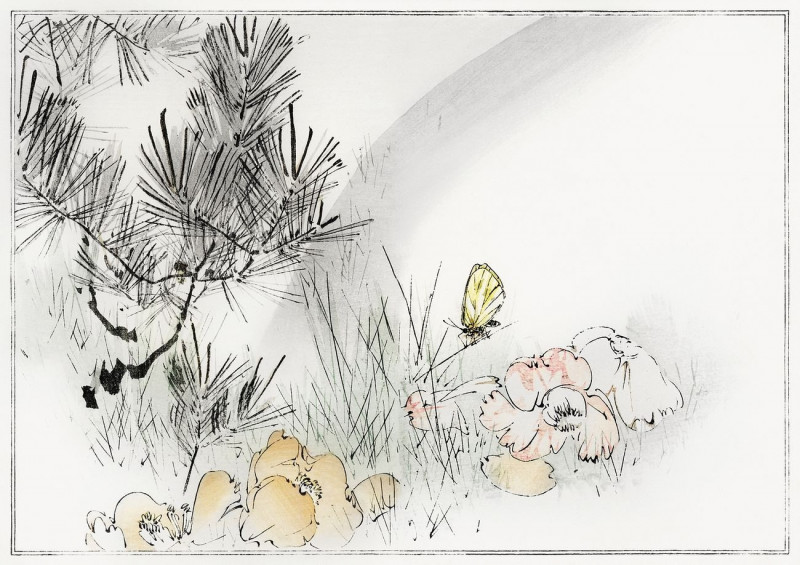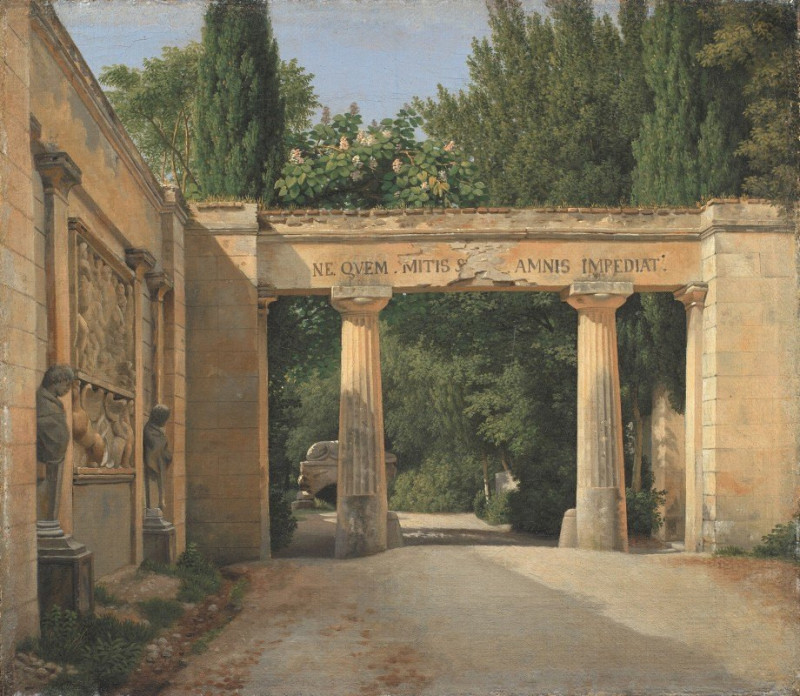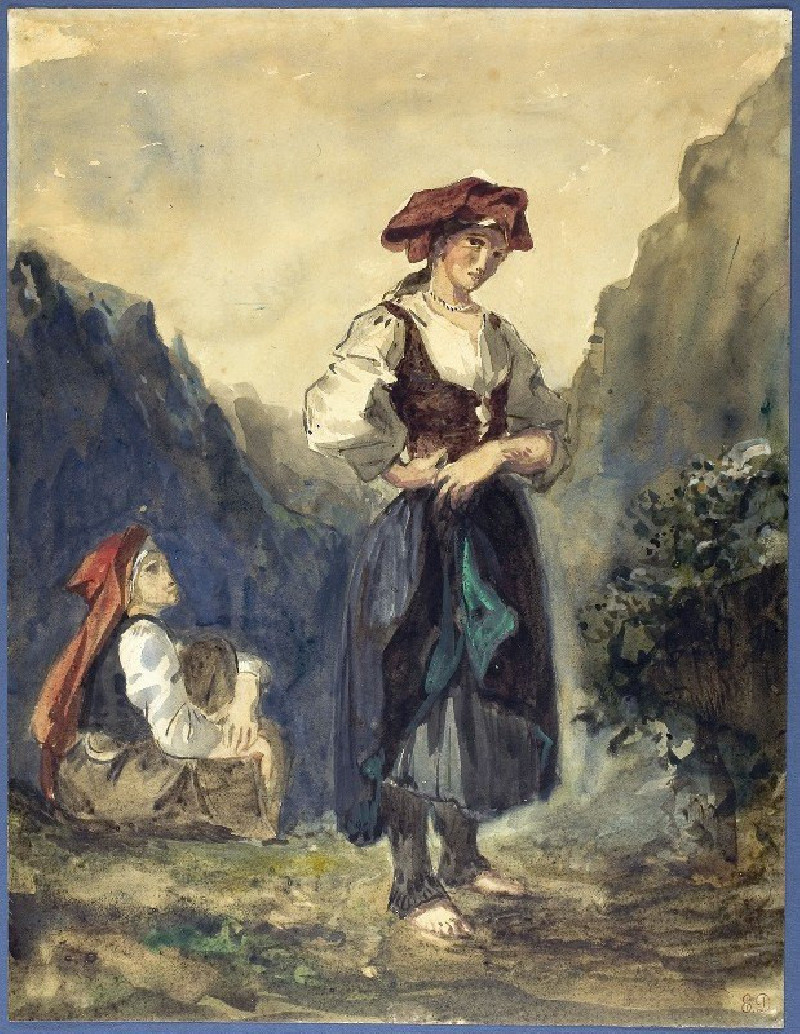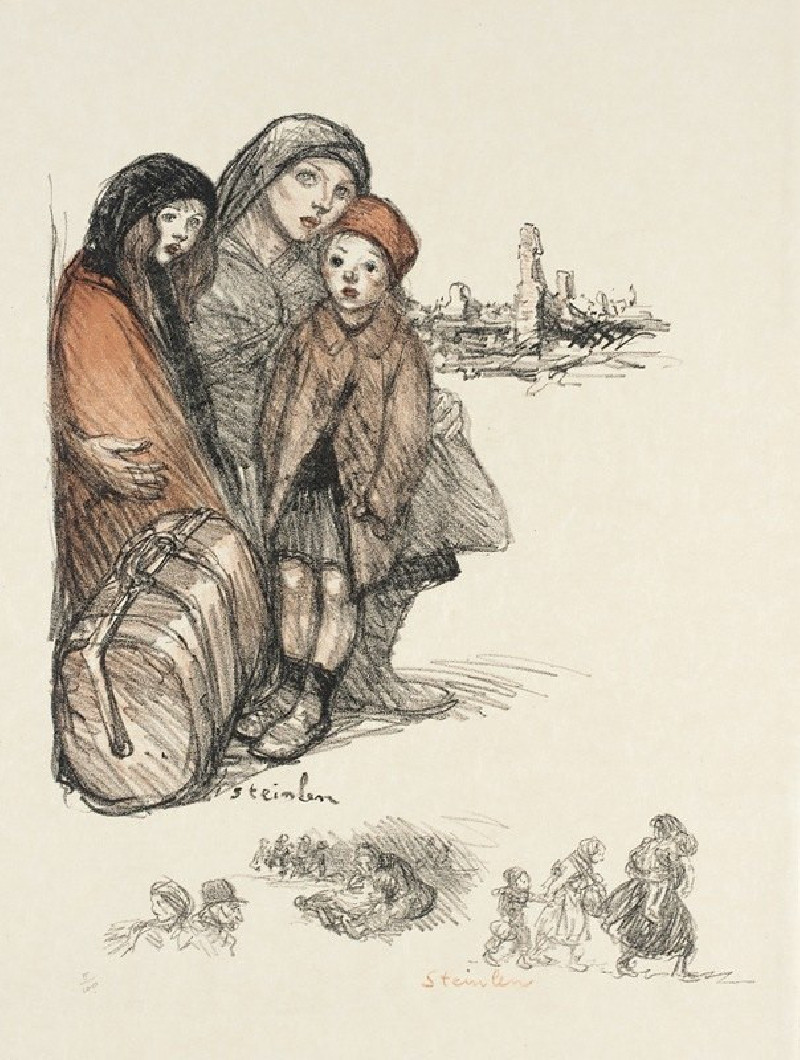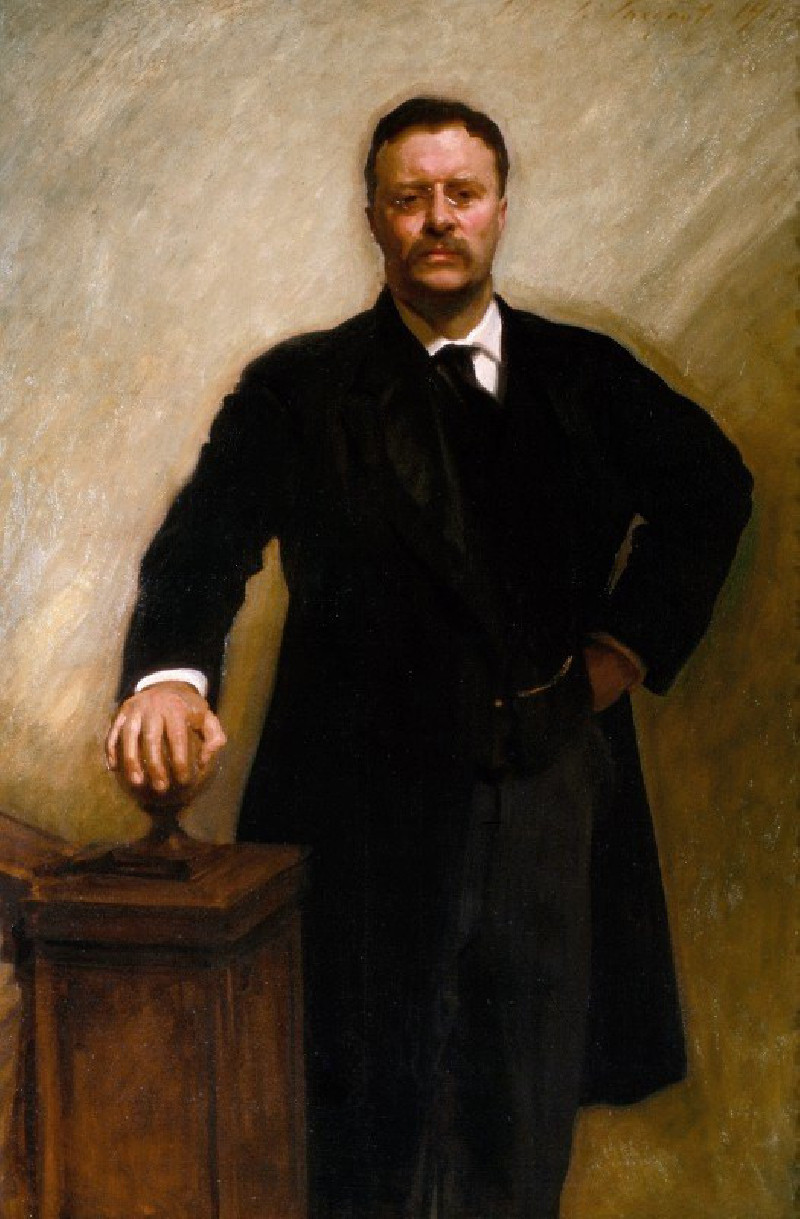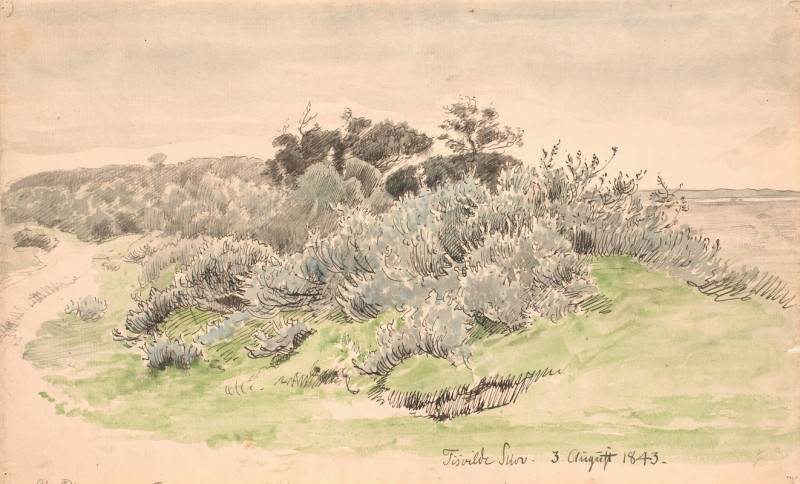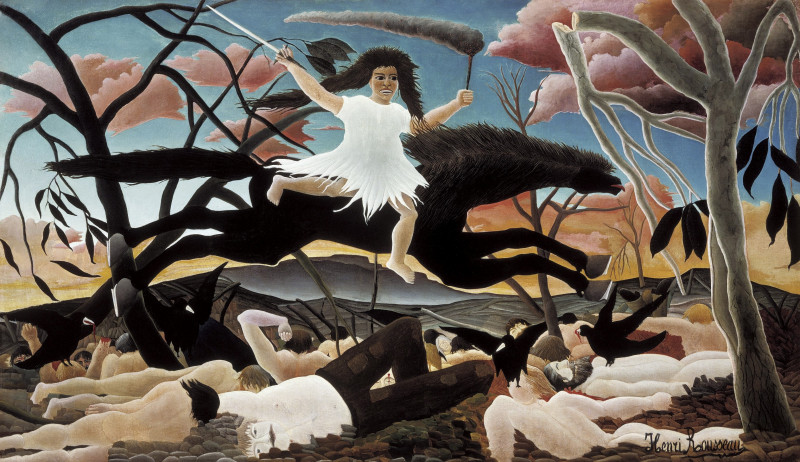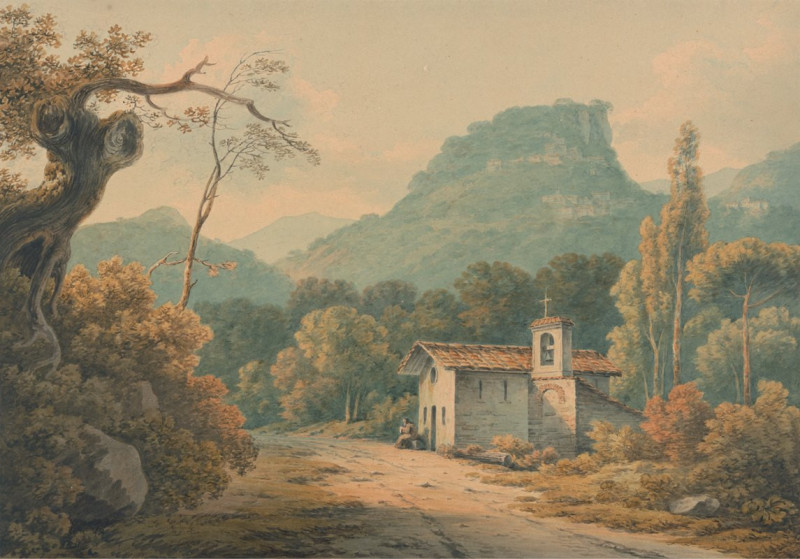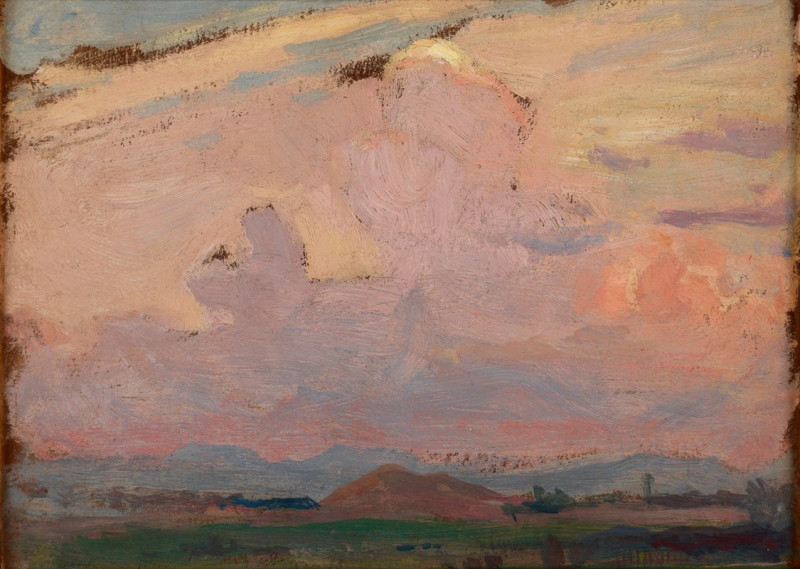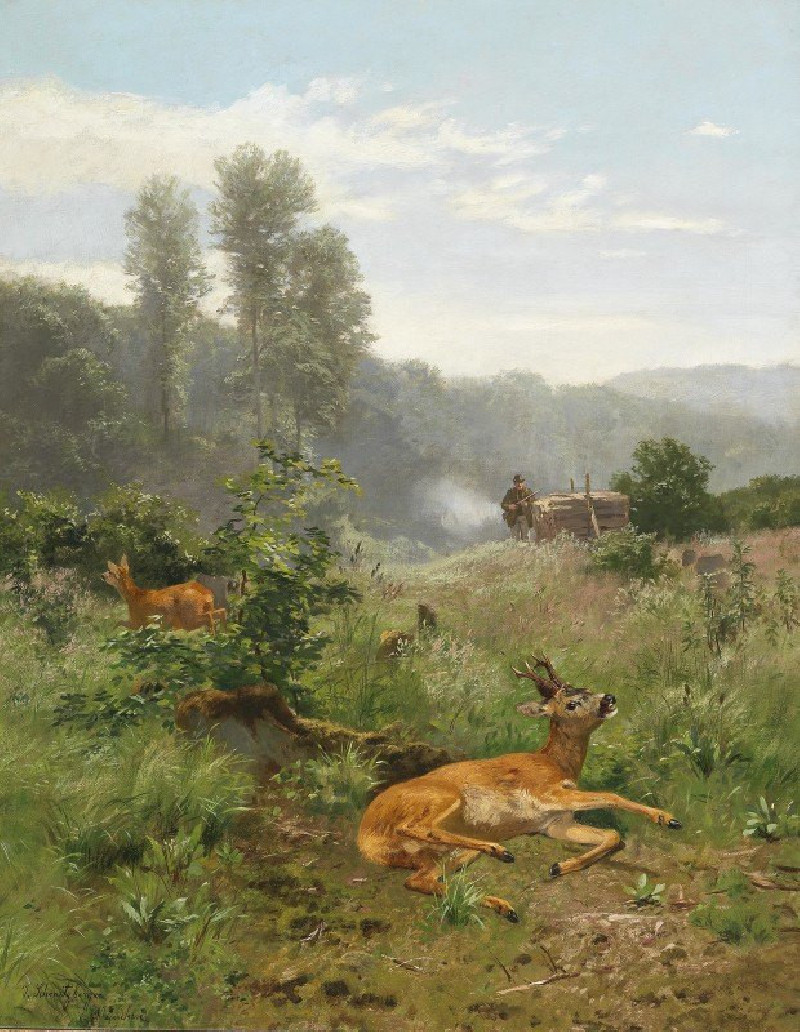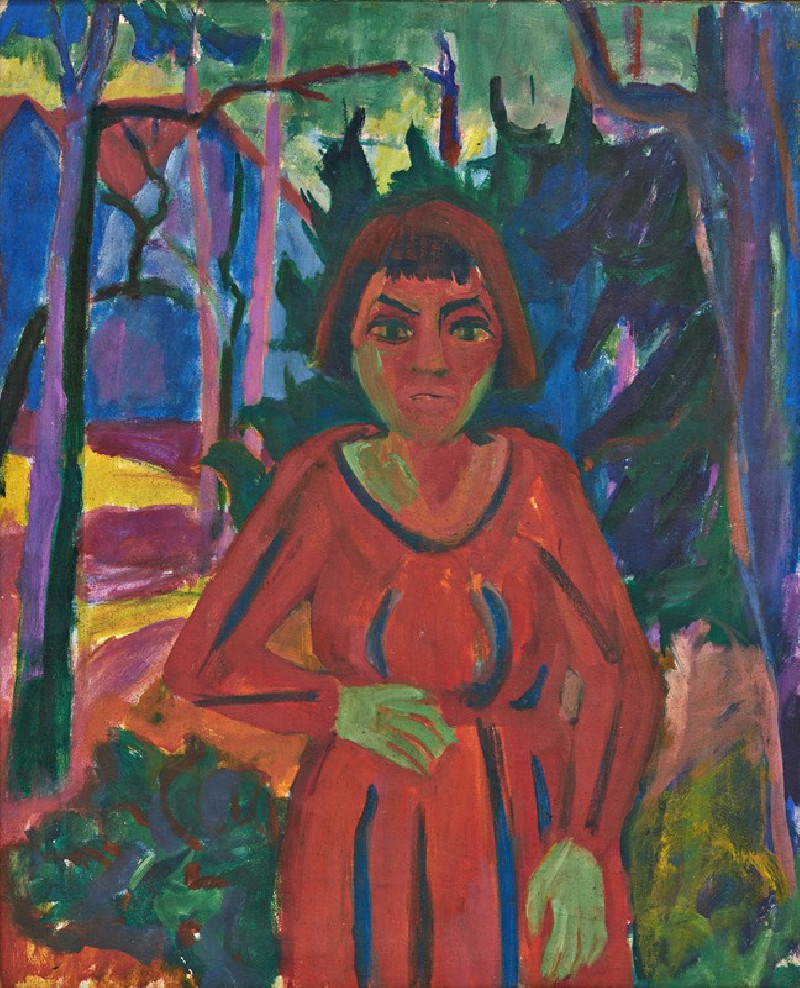Sundown (1884)
Technique: Giclée quality print
Recommended by our customers
More about this artwork
"Sundown" (1884) by George Inness captures the serene and evocative mood of a countryside scene at dusk. This masterpiece of American landscape painting depicts a vast expanse of land bathed in the soft, fading light of the setting sun. The painting is characterized by subdued tones and a harmonious blend of colors that evoke a tranquil, almost mystical quality.In the foreground, three prominent trees stand tall, serving as silent observers of the scene. These trees help to frame the composition and draw the viewer’s eye deeper into the landscape. Moving into the middle ground, we see a figure, possibly a farmer, who appears to be walking towards the trees, suggesting human presence and activity within this peaceful environment.Further back, the landscape opens to a pasture dotted with grazing cattle, a traditional element that reinforces the rural theme of the painting. The expansive sky, rendered in hues of blue and gold, hosts a large, luminous sun that seems to be just touching the horizon. To the right, farm buildings, including a house and a large barn, nestle in the distance, emitting wisps of smoke that signify the end of a day's labor.Inness's use of light and shadow, along with his soft brushwork, creates a textured atmosphere that is both intimate and grand. "Sundown" not only highlights the natural beauty and tranquility of the American landscape but also reflects the artist’s spiritual and emotional connection to nature.
Delivery
Returns
George Inness (May 1, 1825 – August 3, 1894) was a prominent American landscape painter.
Now recognized as one of the most influential American artists of the nineteenth century, Inness was influenced by the Hudson River School at the start of his career. He also studied the Old Masters, and artists of the Barbizon school during later trips to Europe. There he was introduced to the theology of Emanuel Swedenborg, which was significant for him; he expressed that spiritualism in the works of his maturity (1879–1894).

